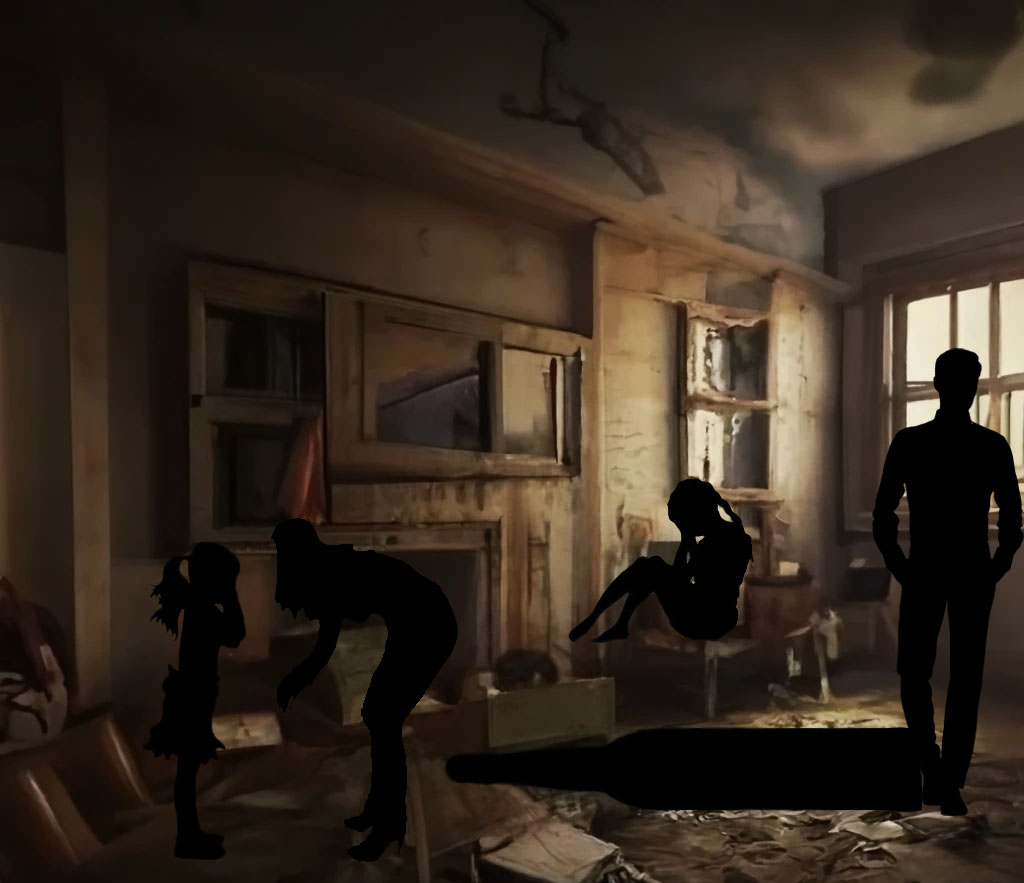
Chances are, you know an alcoholic, or you know someone close to an alcoholic. Maybe it’s a grandparent, or a friend’s mom, or your aunt’s college roommate. With over 30 million Americans reporting having alcohol use disorder in 2021, it is likely that most people know someone who has experienced the deleterious effects of alcoholism (SAMHSA, 2022).
If nearly everyone knows someone impacted by alcoholism, why is binge drinking so normalized? Countless songs, shows, and movies such as Weekend at Bernie’s, The Hangover, and The Great Gatsby glorify drinking, sometimes to the point of blacking out, as a fun way to escape reality. From 1998 to 2008 it was found that most of the top 100 Box office hit movies depicted alcohol use and over half contained an alcoholic brand appearance (Dal Cin et. al 2008: 1930). Such accounts downplay binge drinking’s considerable risks. Research suggests that exposure to alcohol in films is linked to early onset drinking (Sargent et. al 2006: 54).

In a world where alcohol consumption is so normalized, what happens to the people affected by alcoholics, specifically their children, who are exposed to regularly inebriated parents from a young age? In 1981 it was estimated that there were between 28 and 34 million children and adults in the US who grew up in or are being raised in alcoholic families (Crespi 1997:408), and in 2017 nearly 11% of children aged 17 and younger in the US lived with a parent with alcohol use disorder (Lipari and Struther 2017).
Unable to “Find Themselves”
Children of alcoholics are often unable to develop a sense of who they are as an individual, which affects their behavior in relationships. A big part of maturing and becoming one’s own person is learning to separate and choose between one’s emotional functioning and intellectual functioning. Children of alcoholics often aren’t able to separate these two properly, because they are often used as crutches by their parents, who are unable to function by themselves (Crespi 1997:410-413).
This leads to unhealthy role taking in relationships later in life. Some children assume a childlike position in relationships even as adults, because they parentify their partner to make up for the nurturing their parents did not provide. Others are unable to feel comfortable unless they are taking care of others in relationships: they take on the role of caretaker in their family and, later on, within their relationships. These roles are also taken in professional and other social situations, integrated throughout their lives (Crespi 1999:413-414).
Long-lasting Impacts
Children of alcoholics often experience many behavioral and emotional repercussions. They are more likely to become chemically dependent and experience family violence and abuse. They also have an increased chance of running away from home as a result of this family violence (McGaha and Leoni 1995:481). Children with an alcoholic-dependent parent are also at an increased risk for ADHD, childhood conduct disorder, and overanxious disorder (Kuperman et al. 1999:691).
In addition, in a study on children of alcoholics, all participants stated they experienced negative emotions during their childhood years because of their parent’s alcoholism, and over half of the participants behaved in ways that were negative reactions to their parents’ drinking, such as being controlling, partying, yelling, drinking, and more (Bickelhaupt, Lohman, and Neppl 2021:124).
Healing for Family and Friends
Many steps are available for those who are struggling with a close friend or family member’s alcoholism. An important first step is to find ways to focus on their own self, so that they can regain and distinguish personal beliefs, regardless of whether it provokes the alcoholic or not, identify their own triggers and find ways to cope with them. Increased self- focus can be attained through avenues such as church, family, careers, and Al Anon (Eells 1986:500). Al Anon Family Groups provide free resources and support around the world for those who have someone close to them struggling with alcoholism (Al-Anon Family Groups 2021). A study by addiction experts Lance Young and Christine Timko shows that Al Anon groups are anonymous, accessible, and provide beneficial social support from people going through the same thing (Young and Timko 2014:66).

Learning to cope with the alcoholism of someone close to you is hard work and takes a lot of time, but is a process that can be highly rewarding and healing (Eells 1986:503).
References
Anon. 2021. “Anon Family Groups.” Retrieved April 1, 2024 (https://al-anon.org/).
Bickelhaupt, S. E., Lohman, B. J., & Neppl, T. K. (2021). The Influence of Parental Alcoholism on Parent–Adolescent Relationships From Adolescence Into Emerging Adulthood: A Qualitative Inquiry. Emerging Adulthood, 9(2), 117-131. Retrieved March 10, 2024 https://doi.org/10.1177/2167696818824186
Crespi, Tony D., and Ronald M. Sabatelli. 1997. “Children of Alcoholics and Adolescence: Individuation, Development, and Family Systems.” Adolescence 32(126):407-17. Retrieved March 10, 2024 (https://www.proquest.com/scholarly-journals/children-alcoholics-adolescence-individuation/docview/195938270/se-2).
Dal Cin, Sonya, Keilah A. Worth, Madeline A. Dalton, and James D. Sargent. 2008. “Youth Exposure to Alcohol Use and Brand Appearances in Popular Contemporary Movies.” Addiction 103(12):1925–32.
Eells, Mary A. W. 1986. “Interventions with Alcoholics and Their Families.” Nursing Clinics of North America 21(3): 493-504.
Kuperman, Samuel, Steven S. Schlosser, Jama Lidral, and Wendy Reich. 1999. “Relationship of Child Psychopathology to Parental Alcoholism and Antisocial Personality Disorder.” Journal of the American Academy of Child; Adolescent Psychiatry 38(6):686–92. Retrieved April 1 2024 https://www.sciencedirect.com/science/article/pii/S0890856709631786#:~:text=Parental%20diagnoses%20of%20alcoholism%20and%20ASPD%20were%20associated%20with%20increased,alcohol%20abuse%2C%20and%20marijuana%20abuse.
Lipari, Rachel N. and Struther L. Van Horn. 2017. “Children Living with Parents Who Have a Substance Use Disorder.”Center for Behavioral Health Statistics and Quality, Substance Abuse and Mental Health Services Administration. Retrieved April 10, 2024 (samhsa.gov)
McGaha, Johnny E., and Edward L. Leoni. 1995. “Family Violence, Abuse, and Related Family Issues of Incarcerated Delinquents with Alcoholic Parents Compared to those with Nonalcoholic Parents.” Adolescence 30(118):473-82. Retrieved April 1, 2024 (https://www.proquest.com/scholarly-journals/family-violence-abuse-related-issues-incarcerated/docview/195935632/se-2).
SAMHSA, Center for Behavioural Health Statistics and Quality. 2022. “Table 5.9A and Table 5.9B—Alcohol use disorder in past year: among people aged 12 or older; by age group and demographic characteristics, percentages, 2021 and 2022”. 2022 National Survey on Drug Use and Health. Retrieved April 1, 2024 (NSDUHDetTabsSect5pe2022.htm)
Sargent, James D., Thomas A. Wills, Mike Stoolmiller, Jennifer Gibson, and Frederick X. Gibbons. 2006. “Alcohol Use in Motion Pictures and Its Relation with Early-Onset Teen Drinking.” Journal of Studies on Alcohol 67(1):54–65.
Uscola, C. J. (2023). Drinker Identity Development: Shame, Pride, and a Thirst to Belong. Society and Mental Health, 13(1), 45-60. Retrieved April 10, 2024 https://doi.org/10.1177/21568693221141927Young, Lance Brendan and Christine Timko. 2014. “Benefits and Costs of Alcoholic Relationships and Recovery through Al-Anon.” Substance Use; Misuse 50(1):62–71.
Young, Lance Brendan and Christine Timko. 2014. “Benefits and Costs of Alcoholic Relationships and Recovery through Al-Anon.” Substance Use; Misuse 50(1):62–71.